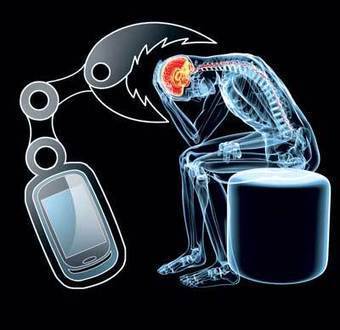What is the International EMF Project?
Background
Potential health effects of exposure to static and time varying electric and magnetic fields need scientific clarification. Electromagnetic fields of all frequencies represent one of the most common and fastest growing environmental influences, about which there is anxiety and speculation are spreading. EMF exposure now occurs to varying degrees to all populations of the world, and the levels will continue to increase with advancing technology. Thus, even a small health consequence from EMF exposure could have a major public health impact.
Concerns have been expressed that exposure to extremely low frequency (ELF) magnetic fields at power frequencies (50/60 Hz) could lead to an increased incidence of cancer in children and other adverse health effects. The evidence comes primarily from residential epidemiological studies. These studies suggest that children exposed to ELF magnetic fields have an associated increased risk of leukaemia.
Radio frequency (RF) fields are used to great benefits in many facets of everyday life, such as radio and TV transmission, telecommunications (eg mobile telephones), diagnosis and treatments of disease and in industry for heating and sealing materials. With the rapid introduction of mobile telecommunications devices, especially among the general public, there has been a focus on the problems associated with near field RF exposure to the head from the small radiating antenna of mobile phones. In addition, concerns persist that exposure to pulsed and amplitude modulated RF fields may cause specific health effects.
As societies develop, greater use of certain technologies leads to increasing exposure to static electric and magnetic fields. This is especially the case in industry, transport, power transmission, research and medicine. Possible health effects from static fields have never been properly assessed. Given the rapid expansion of medical devices and imminent introduction, potentially on a large scale, of magnetic levitation transport systems that use strong static magnetic fields, any health impacts need to be properly assessed.
As part of its charter to protect public health and in response to public concern over health effects of EMF exposure, the World Health Organization (WHO) established the International EMF Project in 1996 to assess the scientific evidence of possible health effects of EMF in the frequency range from 0 to 300 GHz. The EMF Project encourages focused research to fill important gaps in knowledge and to facilitate the development of internationally acceptable standards limiting EMF exposure.
Project objectives
Key objectives of the Project are to:
- provide a coordinated international response to concerns about possible health effects of exposure to EMF,
- assess the scientific literature and make a status report on health effects,
- identify gaps in knowledge needing further research to make better health risk assessments,
- encourage a focused research programme in conjunction with funding agencies,
- incorporate the research results into WHO's Environmental Health Criteria monographs where formal health risk assessments will be made on exposure to EMF,
- facilitate the development of internationally acceptable standards for EMF exposure,
- provide information on the management of EMF protection programmes for national and other authorities, including monographs on EMF risk perception, communication and management, and
- provide advice to national authorities, other institutions, the general public and workers, about any hazards resulting from EMF exposure and any needed mitigation measures.
Project activities
The mandate of the the International EMF Project is to assess the health and environmental effects of exposure to static and time varying electric and magnetic fields in the frequency range 0 - 300 GHz. For the purposes of the EMF Project, this range is divided into: static (0 Hz), extremely low frequency (ELF, >0-300 kHz), intermediate frequencies (IF, >300Hz to 10MHz), and radiofrequency (RF, 10 MHz-300 GHz) fields.
The EMF Project is located at the World Health Organization (WHO) headquarters in Geneva, Switzerland, since this is the only United Nations organization with a clear mandate to investigate detrimental health effects from exposure of people to non-ionizing radiation. The project is part of the Department of Public Health and Environment (PHE) in the Health Security and Environment (HSE) cluster.
United Kingdom Contact Details
Department of Health
Contact name:
Mr Stuart Conney
Organization/address:
Department of Health
Legislation and Environmental Hazards
Wellington House
133-155 Waterloo Road
London, SE1 8UG
United Kingdom
Health & Safety Executive
Contact name:
J Arwel Barrett
HM Principal Specialist Inspector
Organization/address:
Corporate Specialist Division Radiation Team
HSE
Bldg 4N3 Redgrave Court
Merton Road
Bootle. L20 7HS
United Kingdom
Health Protection Agency - Radiation Protection Division
Contact name:
Dr Simon Mann
Organization/address:
Health Protection Agency
Centre for Radiation, Chemical and Environmental Hazards
Chilton, Didcot
Oxfordshire
OX11 0RQ
United Kingdom
 In November, 2009, a scientific panel met in Seletun, Norway, for three days of intensive discussion on existing scientific evidence and public health implications of the unprecedented global exposures to artificial electromagnetic fields (EMF). EMF exposures (static to 300 GHz) result from the use of electric power and from wireless telecommunications technologies for voice and data transmission, energy, security, military and radar use in weather and transportation.
In November, 2009, a scientific panel met in Seletun, Norway, for three days of intensive discussion on existing scientific evidence and public health implications of the unprecedented global exposures to artificial electromagnetic fields (EMF). EMF exposures (static to 300 GHz) result from the use of electric power and from wireless telecommunications technologies for voice and data transmission, energy, security, military and radar use in weather and transportation.








